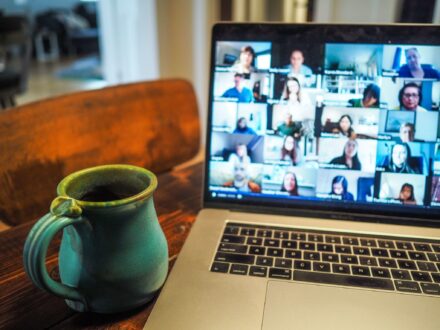Recently, I had the honor of hosting a virtual panel discussion for an organization. I learned a lot within a short period of time about how to host a virtual event. Some things worked well: marketing, event management, and amazing speakers. On the flip side, some things did not work so well: a horrible hosting platform and rocky audience interaction.
It takes a lot of prep to host that perfect virtual panel, and when it is your first time, it’s hard to know where to start. Looking back on my experience, I noticed a few key points that were most important in ensuring complete success.
💪 Battle test a few hosting platforms.
There are so many options when it comes to hosting a virtual panel. You can go with a communication platform such as Zoom, Teams, or Google Meet. Services that are solely dedicated to streaming live content such as YouTube, Samba Live, or GoToWebinar are also good choices.
However, which is the best option for your moderator, guest panelists, and audience? It is extremely important to vet each choice carefully to make a decision that creates a pleasant experience for everyone. Some key questions I recommend asking yourself as you pick a platform:
- How easy is it to get a panelist set up on the software?
- Do panelists need to make an account?
- Will participants need to download an app, or can they use a browser?
- Can an audience member gain access to the stream without needing to create an account or download software they might not have?
- Are the meetings recordable?
- How easy is it for moderators to control the platform (i.e. highlight specific panelists, mute noisy mics, and have a direct line of communication)?
🛑 Make the event URL exclusive.
I am sure you have heard of the horror stories about virtual meetings being ambushed by unwanted guests. Some platforms ensure the audience has no control, but not all.
It is better to be safe than sorry and just leave your event URL behind a form. Whether it is a Google Form or an event created on Eventbrite, it will at least take the individual some effort before they can gain access to your awesome panel.
🏃♀️ Do a trial run.
Plenty of problems could crop up before the big day, so it is best to tackle them ahead of time. Do a trial run on your given platform and make sure that the panelists and moderator are properly set up for success. Here is a basic checklist that helped me out during my first trial run:
- Make sure the internet connection is stable for everyone.
- Test microphones and speakers.
- Ensure panelists can log in to the event easily and address any problems that may have come up.
- Test event recording.
- Check that the audience side of the event looks as expected.
👩💻 Determine how your audience will interact.
Audience interaction is important and having a clear, tested-out plan will only set you up for success. Let your audience know at the start of the event where they can interact and what to expect.
Is there a Slack channel for posting tech support problems during the stream? Will there be a live chat on the streaming platform? Is there a third-party app for live Q&As, polls, and quizzes?
There are several great tools that you can use such as Pigeonhole Live, Slido, or Mentimeter. Get creative in these virtual tools and encourage audience interaction!
🗣 Establish a discussion pattern.
Going virtual opens the door to a large audience but closes the door to a natural speaking cadence. Internet connections vary, and it only takes one slip-up for a group of people to start accidentally talking over each other. This is why it is important to establish a discussion pattern. Two that I have seen work nicely have been the “Round Robin” style and the “Conversational” style.
Round Robin works by having your moderator call on each panelist by name per question asked. This allows all panelists a chance to speak in an orderly manner.
Conversational style puts the panelists more in control by having them call on each other as the question makes its way through the group. This leaves less control in the hands of the moderator but allows for a more casual style of conversation to unfold.
Be sure to pick a method that works best for your topic, moderator, and panelists.
🥳 Bonus tip: Relax and have fun.
Hosting a virtual panel for the first time can be scary. There is nothing you can do if someone’s internet connection suddenly dies or a microphone suddenly disconnects, but that is okay. Your audience will understand that sometimes there are bumps in the road. The key thing is that you get to deliver great content to people all around the world. Relax, have fun with it, and you will do great!

